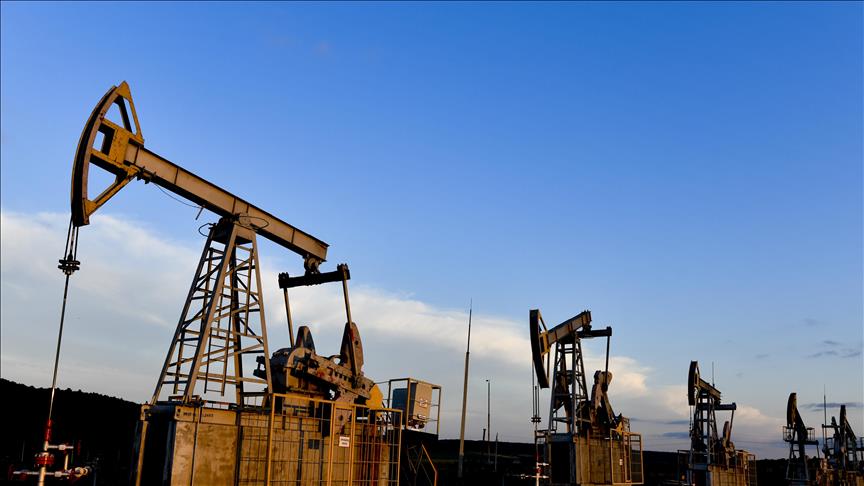Oil Prices Dip as OPEC+ Approves Another Major Output Boost for September
Oil Prices Dip as OPEC+ Approves Another Major Output Boost for September
By
Calder Monroe
Last updated:
August 4, 2025
First Published:
August 6, 2025

Oil Prices Edge Lower on Supply News
Oil prices retreated in early Asian trading Monday following OPEC+’s announcement of another significant production increase for September—signaling the group’s continued pivot away from supply restraint.
- Brent crude futures declined by $0.43 or 0.62%, to $69.24 per barrel.
- U.S. West Texas Intermediate (WTI) slid $0.39 or 0.58%, to $66.94 per barrel.
Both contracts had already ended the previous week nearly $2 per barrel lower, amplifying concerns that the market could face short-term pressure from a wave of additional supply.
OPEC+ Approves 547,000 bpd Output Increase
At a brief virtual meeting on Sunday, the coalition of oil producers known as OPEC+ agreed to ramp up production by 547,000 barrels per day (bpd) in September. This marks the fifth consecutive monthly hike since April and continues a broader reversal of pandemic-era output cuts.
In total, this latest hike is part of a 2.5 million bpd restoration plan, which includes a special increase for the United Arab Emirates (UAE) and represents roughly 2.4% of global oil demand.
While the full OPEC+ group includes 23 members (13 OPEC countries and 10 allies like Russia and Kazakhstan), Sunday’s decision was made by eight core members, highlighting the influential bloc’s inner dynamics.
Geopolitical Pressures Add Complexity
The decision comes amid mounting diplomatic pressure from the United States on nations like India to curb purchases of Russian crude, part of President Donald Trump’s push to bring Russia to the table for a peace deal with Ukraine by August 8.
While the production increase might alleviate global inflationary pressures tied to energy, it could also undercut Russia’s oil revenues—a potential strategic aim of U.S. diplomacy.
Market Fundamentals Remain Tight
Despite the output increase, analysts say fundamentals remain relatively strong.
“With oil prices holding near $70 per barrel, OPEC+ has room to maneuver,” said Amrita Sen, co-founder of Energy Aspects. She noted that global inventories remain tight, providing a cushion for absorbing additional barrels without triggering a supply glut.
Giovanni Staunovo, commodity strategist at UBS, added: “So far, the market has absorbed the added supply thanks to stockpiling activity in China,” but warned that the next key catalyst will be Trump’s forthcoming policy stance on Russia.
A Pattern of Aggressive Rebuilding
Since April, OPEC+ has accelerated its output ramp-up:
- April: +138,000 bpd
- May to July: +411,000 bpd each month
- August: +548,000 bpd
- September: +547,000 bpd
This steady cadence signals a coordinated effort to restore pre-2020 market share and meet robust post-pandemic demand.
Still on the table is a voluntary cut of 1.65 million bpd by the eight members, which is currently set to remain in place through end-2025, as well as a broader 2 million bpd cut across all OPEC+ members that expires in 2026.
What’s Next: September Meeting and Strategic Decisions Ahead
OPEC+ will reconvene on September 7, where members may debate whether to reimpose some of the 1.65 million bpd voluntary cuts or extend the production hikes further.
According to Jorge Leon, senior vice president at Rystad Energy and former OPEC advisor, “OPEC+ has passed its first major test—reversing deep cuts without triggering a price collapse.” But the harder challenge, he warned, lies ahead.
“Deciding when and how to unwind the remaining curbs will be far more difficult, especially amid volatile geopolitics and internal group cohesion risks,” Leon added.
Bottom Line
OPEC+ is walking a tightrope: managing supply to retain control over oil prices while navigating political headwinds and growing global competition. While markets have so far absorbed the extra barrels, future production decisions will hinge on economic data, geopolitical developments, and the evolving energy transition.
Investors, traders, and policymakers alike will be watching September’s OPEC+ meeting closely as the group redefines its role in an increasingly complex oil market.
Popular articles
Subscribe to unlock premium content
Disney’s Timeless Magic and How the Entertainment Giant Continues to Shape Culture and Innovation

Imran Khan’s Economic Missteps Amid Political Chaos in Pakistan

The Philippines’ Digital Shift How Remittances and BPO Are Fueling Growth

Disney’s Timeless Magic and How the Entertainment Giant Continues to Shape Culture and Innovation

Imran Khan’s Economic Missteps Amid Political Chaos in Pakistan

Disney’s Timeless Magic and How the Entertainment Giant Continues to Shape Culture and Innovation









